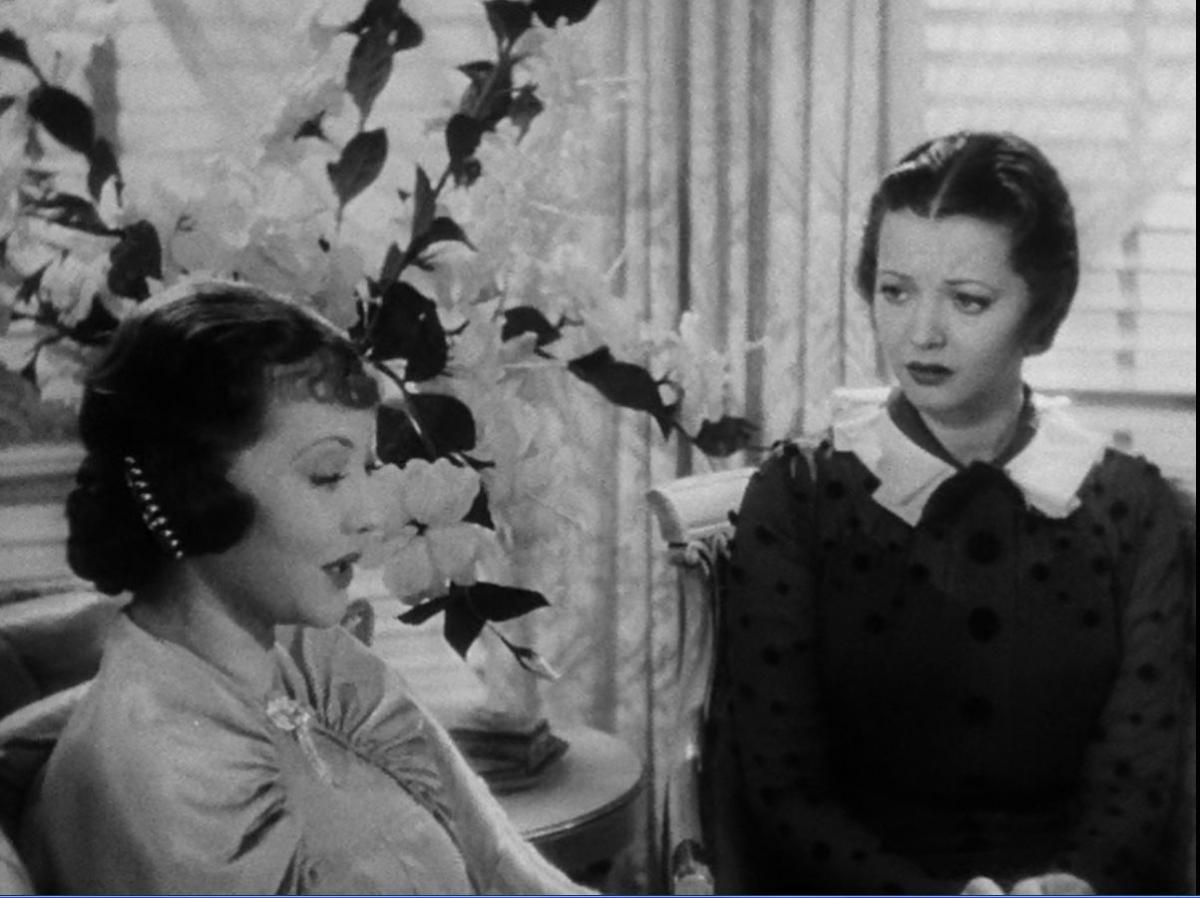Paramount, 1934. Director: Marion Gering. Screenplay: Preston Sturges and Frank Partos, based on the story by Clarence Budington Kelland. Camera: Leon Shamroy. Film editor: Jane Loring. Cast: Sylvia Sidney, Cary Grant, Edward Arnold, Henry Stephenson, Vince Barnett, Lucien Littlefield, Robert McWade.
Considering the latter-day popularity of so many other Depression-era class comedies, I don’t know why Thirty Day Princess is so little known. The film’s plot is essentially a twist on a classic plot formula. Edward Arnold, as a prominent U.S. banker, has ambitions to float a bond issue to a mythical European country. To build public support for his plan, he arranges an American publicity tour by the country’s princess, played by the charming Sylvia Sidney. On the eve of the tour the princess comes down with the mumps, and Arnold is obliged to find a look-alike to take her place. He recruits a penniless New York girl who aspires to an acting career, and who—likewise played by Sidney—is a dead ringer for the princess.
The stage is then set for a gender-reversed variation on the classic Prisoner of Zenda/Prince and the Pauper plot situation: a commoner switching places with royalty. Here the treatment is lighthearted, and the focus is entirely on the American girl thrust into the role of a princess—for a limited time. Inevitably there are complications: Cary Grant, as a crusading newspaper editor, has a long-standing feud with Arnold and sets out to ruin him by discrediting the princess. Naturally he and Sidney fall in love, and needless to say, all ends happily.
Depending on the writing and direction, a light romantic comedy like this can be either a delight or a misfire. Thirty Day Princess is a delight. That’s hardly surprising when we consider the writing credits: the screenplay is co-authored by no less than Preston Sturges, and based on a story by Clarence Budington Kelland, whose stories also inspired other films including Mr. Deeds Goes to Town. Sturges claimed in later years that little of his material was used in Thirty Day Princess, but the film benefits from a smart script that sparkles with enjoyable dialogue. (Pondering the possibility of finding a double for the princess, Arnold muses: “There’s an old fellow at the club, looks as much like me as I do. Good-looking man, too!” In another scene Grant, composing a fiery editorial, stops to admire his own prose: “Hey, you know, that’s a pretty neat touch, don’t you think?” Robert McWade, as his cynical managing editor, sighs: “I wouldn’t know—I encounter so many neat touches.”)
Some of the film’s witty details extend beyond the dialogue. When Grant takes Sidney to dinner, we hear the restaurant orchestra playing a sprightly instrumental melody. The tune is “She Reminds Me of You,” which Bing Crosby had introduced the previous month in Paramount’s We’re Not Dressing—and which 1934 moviegoers would have recognized as cleverly appropriate to the plot of Thirty Day Princess.
Director Marion Gering handles this material with a deft touch, keeping it light but rarely slipping into out-and-out farce. The story proceeds at a lively but relaxed pace, and, wisely, allows some quiet interludes between the laughs. There’s a rather touching scene in which the American girl, spotted by Arnold’s detectives, flees in panic, thinking she’s about to be arrested for filching a meal from the Automat. Not until she’s ushered into the banker’s presence does the terrified girl understand that she’s not in trouble.
One of the pleasures of the film is its cast. Most of us know Sylvia Sidney from her roles in Hitchcock’s Sabotage and, possibly, Fritz Lang’s Fury, but she deserves to be better known as a charming actress of considerable range. 
Thirty Day Princess is available today on DVD as part of this Cary Grant collection, but in 1934 Grant was only beginning to hit his stride as a screen actor. It’s interesting to see his performance at this early stage in his career. There’s nothing wrong with it, but it’s a long way from the deft, assured comedy performances he would deliver just a few years later in classics like The Awful Truth and His Girl Friday. Edward Arnold is a benign version of his usual oily, intimidating self as the banker, and the cast is rounded out with such beloved character players as Henry Stephenson and Lucien Littlefield. Vince Barnett is downright hilarious as the inept buffoon who has been pledged to the princess in an arranged marriage, and who shows up unexpectedly in the midst of Sidney’s campaign.
With so many qualities going for it, Thirty Day Princess is highly recommended as a light comedy feature of the mid-1930s. I’m not suggesting that it’s an overlooked classic, or that it will rewrite screen history. But it is a useful illustration of the quantities of talent, professionalism, and sheer entertainment value that went into even routine program pictures during Hollywood’s greatest years.
Thirty Day Princess (1934)
July, 2013

